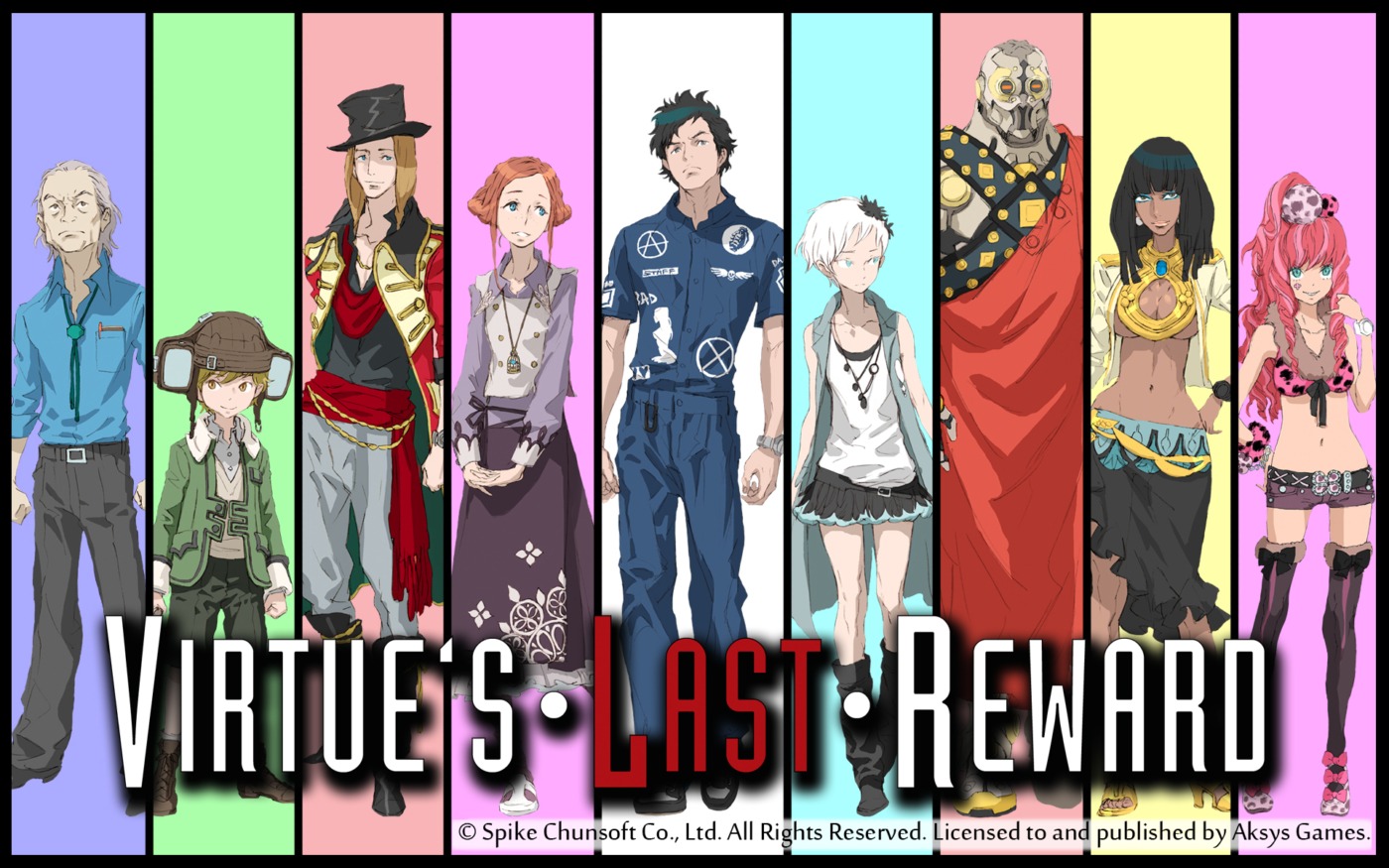Virtue’s Last Reward – Games of the Decade
Virtue’s Last Reward is an intricately structured story, with multiple endings and plot twists. The second game in the Zero Escape series, it provides an experience not dissimilar to its predecessor, Nine Hours, Nine Persons, Nine Doors, but with new characters and heightened stakes.
We follow Sigma, a young man who is kidnapped and forced into the Nonary Game with eight others, in a mysterious facility. They must work their way through a series of escape rooms, collecting points as they go, just like in the first game. However, this version has a new element: the Ambidex Game, where players can choose to ally with or betray with others to win or lose points. Gaining points increases your chance of leaving the facility alive; losing points gets you one step closer to a deadly injection, issued from the players’ point-tracking bracelets.
The best feature of this game is its story
The best feature of this game is its story. A significant amount of the gameplay is given over to a visual novel, allowing for an extremely complex plot. The different timelines, which can be navigated by an extensive flowchart, force the player to watch the characters act out many different scenarios before reaching the one true ending. The story is brutal and violent in many places, sorrowful and heartfelt in others, yet still filled with sarcastic humour. The varying ages and personalities of the characters make the interactions all the more meaningful, which, in turn, makes having to press ‘betray’ in the Ambidex game so much harder. The philosophical questions the game raises, and its incorporation of strange scientific theories to explain its science fiction elements, lend it a unique quality.
Additionally, while many games fall flat with underdeveloped villains, Virtue’s Last Reward offers an unusual adversary: Zero Jr, a malevolent AI who appears on the facility’s computer screens in the form of a rabbit, whose supply of bunny puns are never-ending. His controller, Zero Sr, remains elusive through most of the game, although players with an eye for detail, and an ability to think outside the box, may be able to guess their identity.
The gameplay itself is strategy-based. Players must examine rooms to find clues and solve puzzles in order to obtain two codes: one to escape the room, and the other to unlock additional information about the game. The latter’s usefulness varies, ranging from information about the point of the Nonary Game, to what Quark, the youngest character, keeps in the pockets of his hat.
The varying ages and personalities of the characters make the interactions all the more meaningful
The more complex element comes from having to skip between timelines to gain relevant information, namely codes to defuse bombs, or the backstories of the more mysterious characters. Remembering the details of every timeline can be a challenge, but the game provides you with a notepad (Sigma’s photographic memory), and the ability to play back through previously-played scenes at increased speed, making plot navigation a lot easier than Nine Hours, Nine Persons, Nine Doors.
Virtue’s Last Reward is one of the best of the decade because of its well-written, intricate plot, highly developed characters, multiple plot twists and strategic gameplay. As the second in the series, playing Nine Hours, Nine Persons, Nine Doors beforehand is a must, and this game sets up the plot for the final game of the trilogy, Zero Time Dilemma. Virtue’s Last Reward is my game of the decade.

Comments